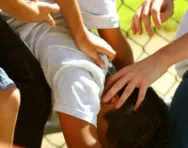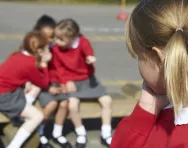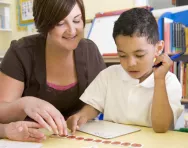Important update from TheSchoolRun
For the past 13 years, TheSchoolRun has been run by a small team of mums working from home, dedicated to providing quality educational resources to primary school parents. Unfortunately, rising supplier costs and falling revenue have made it impossible for us to continue operating, and we’ve had to make the difficult decision to close. The good news: We’ve arranged for another educational provider to take over many of our resources. These will be hosted on a new portal, where the content will be updated and expanded to support your child’s learning.
What this means for subscribers:
- Your subscription is still active, and for now, you can keep using the website as normal — just log in with your usual details to access all our articles and resources*.
- In a few months, all resources will move to the new portal. You’ll continue to have access there until your subscription ends. We’ll send you full details nearer the time.
- As a thank you for your support, we’ll also be sending you 16 primary school eBooks (worth £108.84) to download and keep.
A few changes to be aware of:
- The Learning Journey weekly email has ended, but your child’s plan will still be updated on your dashboard each Monday. Just log in to see the recommended worksheets.
- The 11+ weekly emails have now ended. We sent you all the remaining emails in the series at the end of March — please check your inbox (and spam folder) if you haven’t seen them. You can also follow the full programme here: 11+ Learning Journey.
If you have any questions, please contact us at [email protected]. Thank you for being part of our journey it’s been a privilege to support your family’s learning.
*If you need to reset your password, it will still work as usual. Please check your spam folder if the reset email doesn’t appear in your inbox.
Is your child bullying?

In a survey of 3,000 secondary school children, carried out between 2005 and 2007 by anti-bullying charity BeatBullying, a shocking 71.4 percent admitted to being the perpetrator of a bullying incident.
As a parent, being informed that your child has been bullying is not an easy thing to come to terms with. You may feel defensive, that it couldn’t possibly be true, and you may also feel confused and anxious for your child. What is important, however, is that you are prepared to meet and discuss the allegations with your child’s school.
Why do children bully?
Children may bully others for all manner of reasons. In the BeatBullying survey, reasons given for being a bully included a fear that if they did not do it first it would happen to them, because their friends did it, or anger at another individual.


Start a unique learning programme!
- Weekly programme for each school year
- Worksheets sent direct to your inbox
- Keeps your child's learning on track
A small number of children – two percent of those surveyed – did it because they thought it made them popular.
Signs that your child may be bullying
- Physical – if your child is using their strength or physical presence to intimidate, influence, and impress others
- Emotional – a lack of empathy or conscience, refusal to accept responsibility for their actions, and an overriding desire to be in control
- Behavioural – they may have low self esteem which they cover up by bragging, they may display low-tolerance for others, and reveal negative attitudes towards others
Although a child who displays these indicators may not necessarily be a bully, they are nonetheless reflective of negative behaviours which may signify that something is not quite right with their emotional health.
What can you do if your child is a bully?
- Approach your child about this serious issue. Discuss it with them and explain why it’s so important. Unfortunately, very often, a child may deny they are bullying.
- Speak to your child’s school. Listen carefully to the teaching staff and be open to communication with them. Do ask to view the school’s anti-bullying policy if you feel it necessary. And don’t be afraid to ask the school for advice on helping change your child’s behaviour.
- Do consider your child’s experiences at home – have they been through an emotionally difficult time recently? Do you and your other family members model respectful, tolerant, positive behaviour to your child?
- Consider their peer group and who their friends are in school. If needs be, encourage them to make new friends, and involve the school in your concerns.
- Try to get to the bottom of their difficulties by spending time with your child. Encourage them to explain their behaviour and feelings.
- Give plenty of praise to encourage good, positive behaviour.
- Do agree some ground rules with your child on acceptable behaviour and discuss what might happen if they do not follow these rules.








